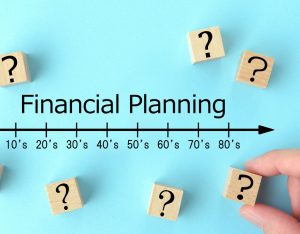The process of creating a budget when you’re in debt could be overwhelming. The idea of balancing your debts with the money you’d like for savings or to invest could seem like a daunting task. However, having a financial plan is what you need to take charge of your money and begin making the life you’ve always wanted. This guide will walk you through the necessary steps to create a concrete and effective financial plan, even if debt seems overwhelming.
Understanding Your Debt
Before you start developing a financial strategy, it’s important to first understand the specifics of what you’re dealing with. Examine your entire debt, which includes student loans, credit cards, medical bills, and other obligations. Note down the balance of each debt as well as the interest rate and minimum monthly payments. This may be uncomfortable; however, it’s necessary to be honest about your current financial position.
By determining the nature and amount of debt you have, you can plan to deal with it. All debts are not created in the same way. High-interest credit card debt might require immediate attention, and a student or mortgage loan might be more important in accordance with its terms. Knowing is power, and knowing your debt will give you the knowledge you need to make the right decisions.
Creating a Realistic Budget
After you’ve reviewed your debt The following step is to develop your own budget that is suitable for you. Begin by identifying all of your sources of income and fixed expenses like rent, utility bills, and the down payment on loans. Also, keep track of your discretionary expenses, such as eating out, shopping, streaming subscriptions, or dining out.
It is important to determine how much money you spend every month and to identify areas where you can cut back. Utilize the 50/30/20 rule to guide you if you’re not sure where to begin. Set aside 50% of your earnings for the necessities, 30% for desires, and 20% for savings or the repayment of debt. Making even small changes, like cooking at home or stopping the subscription to a service, will make money available for more financial objectives.
Setting Financial Goals
You can’t direct a financial plan without clear goals. Spend some time defining goals for the short term, such as paying off credit cards within a timeframe of six months, and longer-term goals, such as savings for a home or retirement. The goals must be specific, measurable, achievable, relevant, and time-bound. (specific, measurable, feasible, relevant, time-bound, and pertinent). For instance, “save $5,000 in one year” is a more important target than “save money.”
Your goals will be a “why” during tough times. Repayment of debts is often an endurance race and not a sprint, and keeping your eyes on your goals keeps you focused. If it’s financial independence and travel one day or building wealth over the generations, knowing what your goal is helps you remain on the right course.
Choosing a Debt Repayment Strategy
Different repayment methods are equally effective. Your debt, income, and priorities determine the best strategy. Two strategies that are popular are the snowball and avalanche techniques.
The snowball method consists of paying off the debts with the lowest balance first and then making the minimum payments for the remainder. This can result in rapid wins that increase your confidence and speed. However, the avalanche method is geared towards debts that have the most interest rates. By focusing on debt with high interest, it is the best way to save cash in the end. Both strategies are viable, but the most effective strategy is the one that works best for your needs and is constant.
Automating Savings and Payments
Automating your finances is one of the easiest ways to stay in control of them. Automate repayments on your debts to prevent the cost of late fees and negative effects on your credit rating. Consider automating the savings account contributions, even if the amount is just $20 a week.
The “set it and forget it” method eliminates the requirement for constant determination. As time passes, the progress you make will not have to make daily decisions or exert effort. Automation isn’t just for practical reasons; it’s also a tool to provide mental relaxation, allowing you to remain focused on other aspects within your daily life.
Seeking Professional Help
Sometimes managing debt and creating a financial plan requires the expertise of a qualified professional. Credit counselors or financial advisors offer individualized advice that is specifically tailored to your needs. They can assist you with creating complete plans to negotiate with creditors or suggest options like debt settlement or consolidation.
While hiring a professional might require upfront expenses, however, the long-term benefits usually surpass the cost. They will save you time, avoid costly mistakes, and give you assurance that you’re on the right track to follow. If seeking professional guidance isn’t financially viable, many nonprofit organizations provide affordable or free counseling services.
Reviewing and Adjusting Your Plan
The financial plans you make aren’t static. They’re living documents that must adapt to your needs. Changes in your life, like receiving a raise or unexpected medical expenses, could necessitate changes in your financial plan, debt strategy, or goals. Be sure to review your financial plan on a regular basis, regardless of whether it is quarterly or monthly.
Being agile ensures that you remain focused on your goals regardless of the unexpected. Adjustments don’t mean failure. They’re evidence of your ability to adjust and endure. Enjoy your victories throughout the process, however small, and feel proud of the progress you’ve made.
Staying Positive and Motivated
Making the financial plan could seem like a daunting task. However, keeping an optimistic attitude is vital. Concentrate on the progress you’re making, rather than the lengths you must go. Find a group of people who support your financial goals and who celebrate achievements with you.
It’s also important to remind yourself of why you began this journey. It doesn’t matter if it’s getting financially independent, providing stability to your family, or fulfilling the goal of a lifetime; having the “why” front and center will help you get through the rough times. Every small move is an incremental step towards a brighter financial future.
Take Charge of Your Finances Today
Making a financial plan when facing debt is a difficult task; however, it can also be empowering. By knowing your debt, setting objectives, and utilizing tools such as automation and expert assistance, you can take meaningful steps toward financial independence. Be aware that progress is not instantaneous. But every effort is worth it. Start today if you’re eager to regain control over your finances. It’s possible!
FAQs
1. Can you reduce costs while paying off the debt?
Yes, saving money while repaying debt is not just possible, but it is encouraged. Automating small-scale contributions into savings accounts can help you build an emergency fund that protects you from unexpected costs.
2. Do I have to pay off credit or put my money into a fund?
It’s contingent upon factors such as the interest rates on your debt and the expected return on investment. The debt with the highest interest rates usually has the upper hand; however, investing is crucial when the debt you carry is in a manageable amount.
3. How can I ensure that I am on the right track with my financial goals?
Check in regularly to see how you are progressing. Celebrate small successes and automate your savings and payments to be constant. Modify your plan as you need to, but remain determined to achieve your goals.




